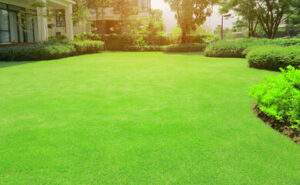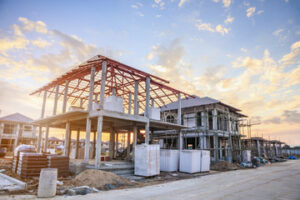Home Remodeling Warrington PA offers several benefits, including increasing your home’s value and improving its functionality. Home remodelers can help you personalize your space, upgrade outdated elements, and create a more comfortable living environment.

Unlike renovation, which focuses on cosmetic changes, home remodeling involves changing the structure of your home through demolition and construction. Home remodeling also includes framing new walls and adjusting the layout.
Home remodeling offers you the opportunity to infuse your living space with your own unique style and tastes. Choosing colors, materials, and furnishings that reflect your personality will help create a warm, inviting home.
Home remodeling can also offer opportunities to add new functionality and flexibility to your living spaces. For example, innovative storage solutions can help reduce clutter and improve organization, while a home office design that incorporates ergonomic furniture can increase productivity. Additionally, incorporating flexible features like movable partitions or sliding doors can make it easier to adapt your space to changing lifestyles.
Incorporating a creative hobby into your everyday life can also be a great way to enhance mental health and reduce stress. Having a dedicated space for your favorite hobby, such as a sewing room, woodworking shop, or artist’s studio can encourage creativity and promote healthy habits. Moreover, having a designated space for these activities can also help you build a sense of community with your neighbors and family members who share your passions.
When completing a home remodel, it’s important to develop a clear vision for the final result. This can help you stay within budget and ensure that the finished product aligns with your lifestyle and preferences. You can get inspiration for your vision by exploring home decor magazines, websites, and social media platforms. Creating a Pinterest board is an excellent tool for collecting ideas and visualizing how you want your home to look.
It’s also important to choose quality materials when completing a home remodel. High-quality materials not only look more appealing, but they also require less maintenance and last longer than their lower-grade counterparts. A quality home remodel will allow you to enjoy your space for years to come.
Increase Your Home’s Value
Home remodeling is not only an investment in your personal comfort and style, but it can also boost the resale value of your property. This is especially important in competitive real estate markets like those found in central New Jersey where homes that feature upgrades such as granite countertops, energy-efficient appliances and modern cabinetry are typically more desirable among prospective buyers than those that lack these features.
A home’s overall appearance is another major factor in determining its value, and a remodel can enhance curb appeal by replacing old windows or adding flowers to the front yard. Other aesthetic improvements such as refinishing hardwood floors or replacing worn carpets can increase a home’s value by improving its functionality and beauty.
However, if you’re considering making significant changes to your home, it’s essential to consult with an appraiser before beginning any work to ensure that the upgrades you’re planning will actually result in higher resale value. This will prevent you from spending money on renovations that are unlikely to be recouped when you sell your property.
If you’re unsure about whether home remodeling is right for you, talk to your local professionals at Design Tech. Our staff is committed to high standards and adherence to the Code of Ethics required of NARI members, so you can rest assured that your project will be completed with the utmost care and attention to detail.
We can help you make the most of your space and get the best return on your investment. Contact us today to schedule a free consultation!
We all love our home and feel a deep connection to it. Whether we raised our family there, have close friends nearby or simply enjoy the convenience and safety it provides, the home is an important part of our lives. But over time, even the most well-maintained homes can become outdated or damaged by wear and tear. Rather than reluctantly moving to a new location, many homeowners choose to stay put and make updates that improve their quality of life. This can include anything from renovating bathrooms or installing a kitchen island to creating an open floor plan and upgrading to energy-efficient appliances.
Increase Your Home’s Functionality
Many homeowners are drawn to home remodeling as a way to revitalize their living spaces. After all, over time even the nicest homes experience wear and tear. Additionally, sometimes our lifestyles change and what was once a perfect home layout may no longer suit our needs.
When our homes no longer function properly, it can cause frustration and stress. However, it is possible to fix these issues with a little bit of remodeling help from the experts at Keith Smith Construction. We have years of experience providing our clients with the home improvements they need to improve their lifestyles. From creating a luxury primary bedroom en suite to upgrading your kitchen with custom cabinetry and premium materials, you can make the most of your space and create a functional home that suits your family’s unique needs.
One of the most common reasons to remodel a home is to address functionality issues that have arisen due to age or changing family dynamics. Whether it’s adding a laundry room to accommodate growing children or installing a home gym to encourage healthy habits, these changes can have a huge impact on your quality of life.
Another reason to improve home functionality is to add features that cater to your hobbies and interests. From home theaters and basement bars to custom countertops and built-in storage, you can create a space that’s truly your own. These types of additions can also increase the value of your home and make it more appealing to potential buyers down the road if you choose to sell.
Lastly, home improvement projects like installing energy-efficient appliances or improving the insulation in your home can significantly increase functionality. This is because they reduce utility bills and can help the environment. Additionally, by tackling these projects now, you can prevent more expensive repairs down the road. This can keep your home in tip-top shape for years to come and make it easier for you to enjoy every day life.
Increase Your Home’s Comfort
One of the most important reasons to remodel your home is to make it more comfortable. By adding storage, improving lighting and air flow, or reorganizing your space, you can create a more functional and welcoming living area that will enhance your comfort.
A well-designed and executed remodel can add tens of thousands of dollars to your home’s value, making it an excellent investment for those considering selling their property in the future. In addition, remodeling can increase your home’s energy efficiency and reduce your utility bills, which can help to offset the cost of the renovation project over time.
Many homeowners choose to remodel their homes because they feel that their current living space no longer suits their lifestyles. As children grow and families evolve, the layout of a house can become cramped and unpractical. A remodel provides the opportunity to make changes that improve your quality of life, such as adding an extra bedroom or installing a new kitchen.
Another reason why many homeowners undergo home remodeling is to add a personal touch. By changing color schemes, incorporating natural elements, or introducing a variety of textures and patterns, you can create a space that feels like home. This can be particularly beneficial if you’re looking to sell your property in the future, as it will allow you to capture a market that is interested in specific design elements.
A well-designed home can also reduce stress and anxiety. For example, by upgrading your appliances and reorganizing your kitchen, you can make cooking and cleanup easier and more efficient. Similarly, by replacing hard tile floors with soft bamboo or carpeted surfaces, you can reduce the knee, hip, and ankle pain associated with standing and walking on hard surface flooring.



